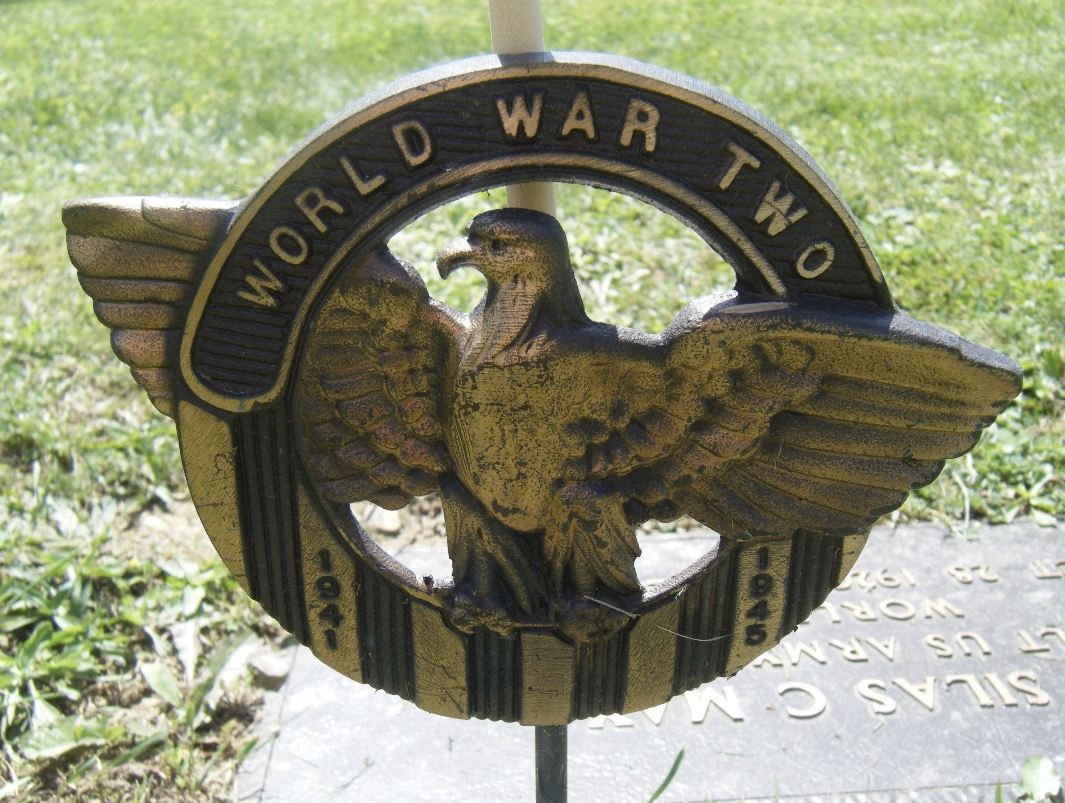1st Lt. Silas Carl May

1st Lt. Silas May, bombardier, received an Order Paper for transfer from Toome, Northern Ireland on the 10th August 1944 for transfer to the 344th bomb group, and was listed with Keith Caldwell as his Pilot; and John Dinou as his Co-Pilot as part of the 496th bomb squadron.


The earliest mission record found was for September 17th.

It seems that this mission to Weiberheim was scrubbed.
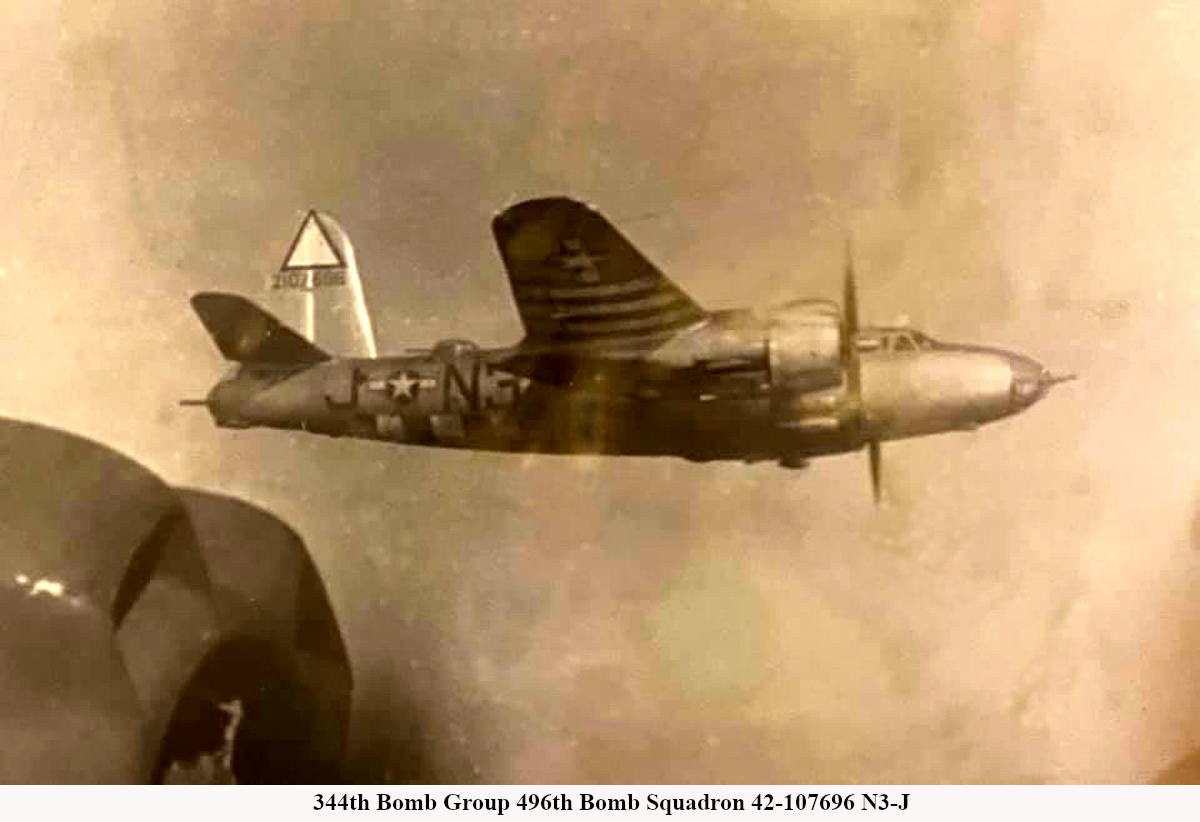
Two days after the 344th bomb group moved from Stansted, England to Cormeilles-en-Vexin, they became operational operational, having worked at top speed to be ready for any target Bomber Divisions might assign to. That assignment came on October 2 and sent Silas May and the rest of the 344th BG formation to bomb an industrial area at Ubach, Germany (near the border of Belgium). Of the 36 aircraft dispatched, only twelve bombed the area. Flak, though moderate, was very accurate, one plane piloted by Lt. Caldwell was battle damaged and subsequently abandoned for
further operations. None of the crew of Lt. Caldwell’s plane were injured. Seven planes bore evidence of slight damage.


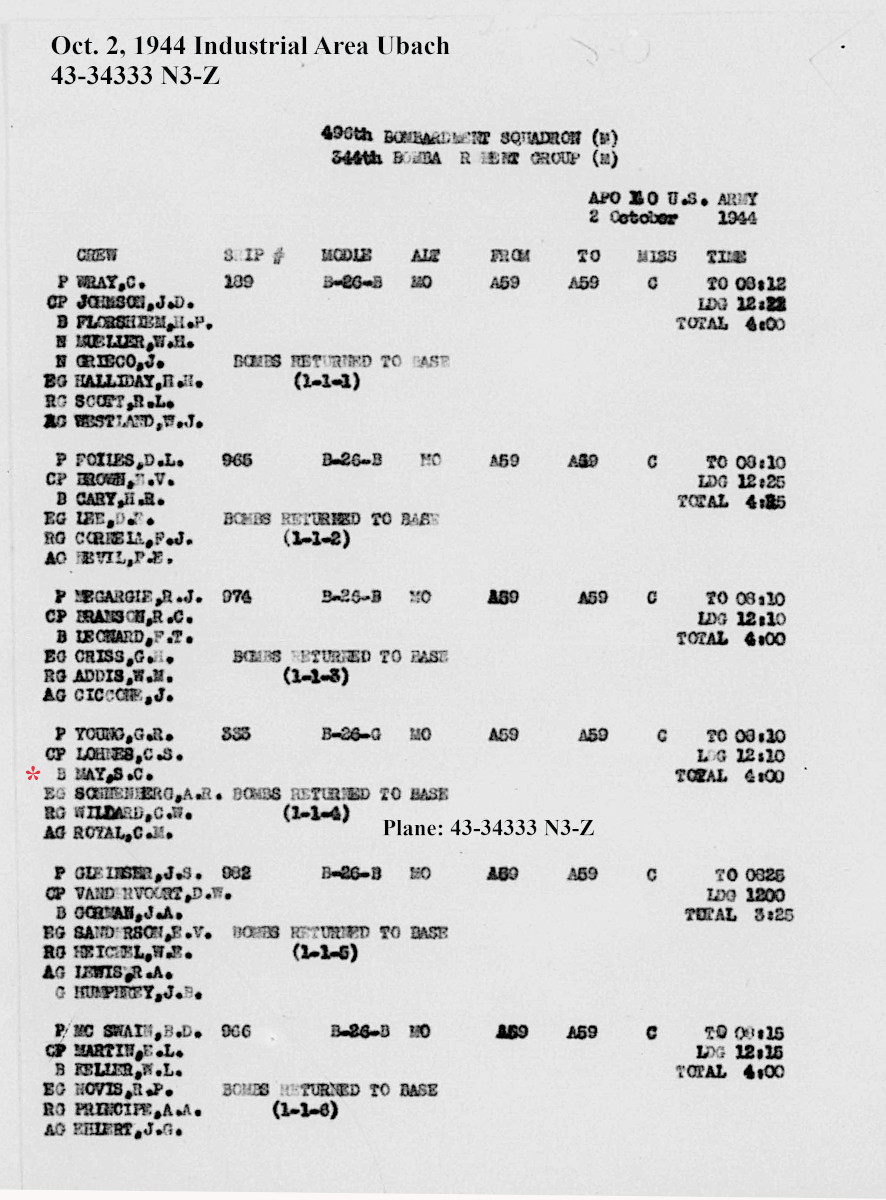

On October 6, the target was a highway bridge in Arnheim, Holland. Thirty-four planes dropped 136 X 100- pound general purpose bombs.The attack was only fair, patchy clouds and slight haze being a determent to good sighting. The enemy threw up a moderate defense action and flak destroyed one plane, damaged five slightly. The missing plane was piloted by 1st Lt. Herbert H. Moore, Jr. of the 495th squadron and was crewed by 2nd Lt. A.J. Allen, Co-Pilot; 2nd Lt. E. Sadula, Bombardier; S/Sgt. B.A. Bielinski, Engineer Gunner; Sgt. Einar H. Nielsen, Radio Gunner; Sgt. N. H. Truax, Radio Gunner; and Sgt. G. M. Boyer, Gunner. The Arnheim bridge was an important objective in the path of British and Canadian units fighting to hold the bridgehead they had established in the face of still
opposition. The enemy had been rushing reinforcements and supplies over this structure bridging the Nedder Riju River a tributary of and continuation of the Rhine, and were making a formidable showing. Its destruction was accordingly imperative.





On October 8, the 344th Bomb Group attacked strong points in the Metz, France area which the Third Army was contesting. Results were very good and materially aided the ground forces in cracking the ring of forts maintained in that section.

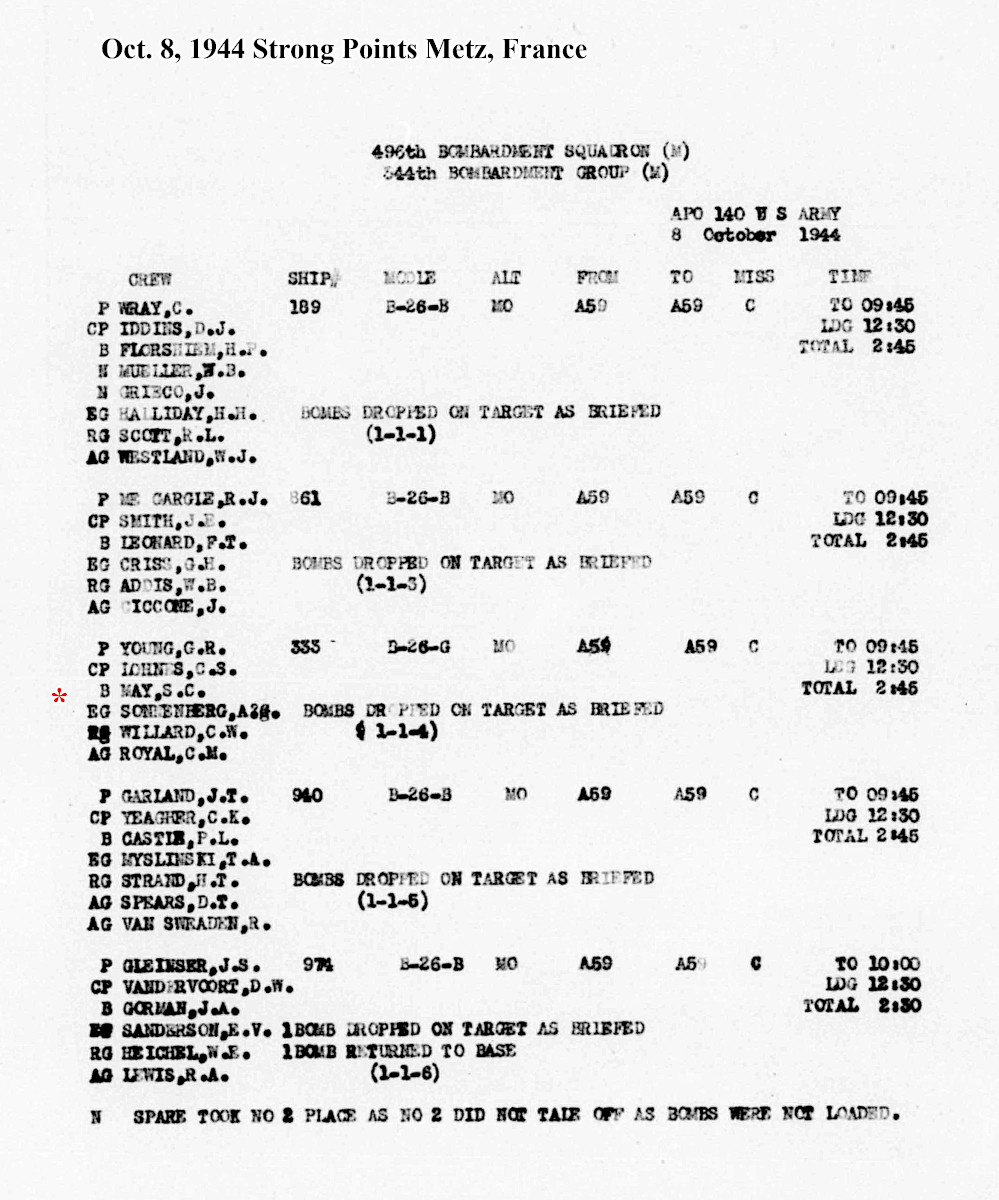



February 6 the crews were briefed for a Pathfinder mission attack on a Munitions Dump located near Rheimbach, Germany. The results were unobserved, but the PFF Bombardier reported his signals were good and strikes should have been in the target area. No flak or opposition was put up against the formation.
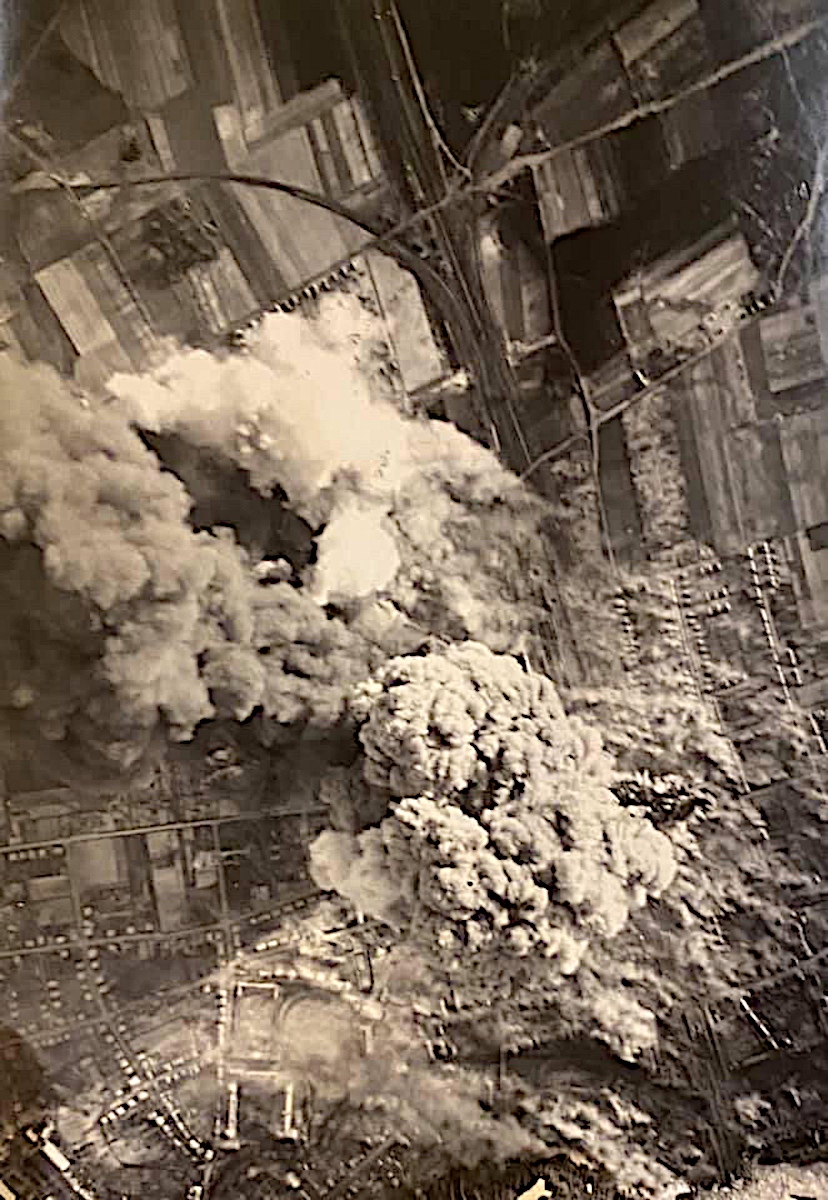



AS the war progressed, crews were less likely to be assigned to the same plane. These pictures from the collection of Silas May are either planes in which he flew or that of his friends.




!st Lt. Silas C. May was discharged from service December 16, 1945.




